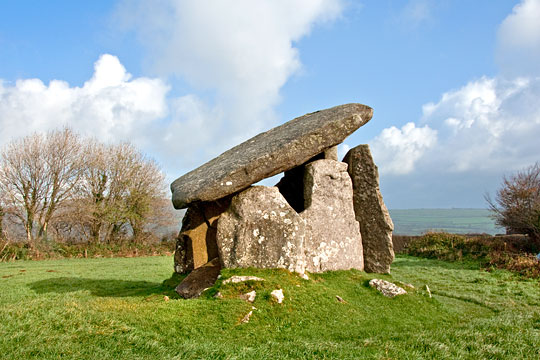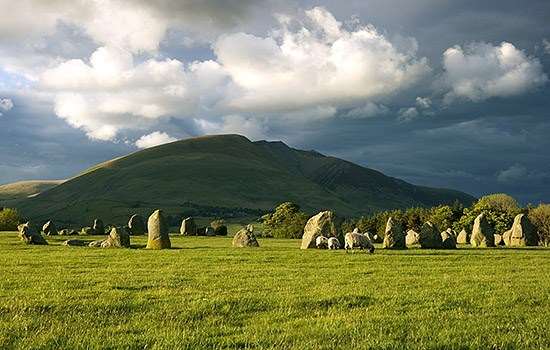History of Trethevy Quoit
Trethevy Quoit is a particularly well-preserved example of a portal dolmen, a type of monument once common in Cornwall and dating to the early or middle part of the Neolithic period, around 3500–2500 BC.

It is far from certain that these structures were tombs rather than multipurpose shrines. The presence of the dead is no guarantee of the original usage, as is shown by medieval churches: these contain tombs and are surrounded by graves, yet they were built primarily as places where the living could worship.
It may be that in prehistoric times the ancestral dead were considered to be mediators between the community and its gods, and that places like this were an important interface between these two worlds.
These burial monuments of Britain’s early farming communities are among the oldest visible monuments to survive to the present day. It is probable that each community once possessed at least one such ‘house of the dead’, and the time and energy they must have taken to build is an indication of the importance that must have been attached to them.
The huge capstone here weighs about 20 tonnes, and manoeuvring it into position was a considerable feat of engineering.
Description
These distinctive structures are found mainly in the far west of Cornwall but this one, on the southern edge of Bodmin Moor, is perhaps the finest.
It consists of five standing stones, surmounted by a massive capstone. The capstone may have been designed to be slightly tilted, but now slopes at a much steeper angle than it would have done originally, because the most westerly of the supporting stones has collapsed and lies within the tomb chamber itself.
There is a hole near the highest corner of the capstone that appears to be man-made. The whole structure stands 9 feet (2.7 metres) high and was probably originally covered by a mound or cairn: the chamber is surrounded by the clear remains of a low mound on all sides, apart from at the entrance. This was at the east end, where the stones form a sort of antechamber, but it is not clear how the chamber was reached from outside the original mound.
The contents of this box-like chamber were removed long ago. At the few portal dolmens that have been excavated, pits and post holes have been recorded within and in front of the chamber, containing charcoal and cremated bone. Many portal dolmens were reused for urned cremations, especially during the Middle Bronze Age.
Further Reading
Borlase, W, Cromlechs and Tumuli of Cornwall (Ceredigion, 1995)
Weatherhill, C, Cornovia: Ancient Sites of Cornwall and Scilly (Tiverton, 1997)


